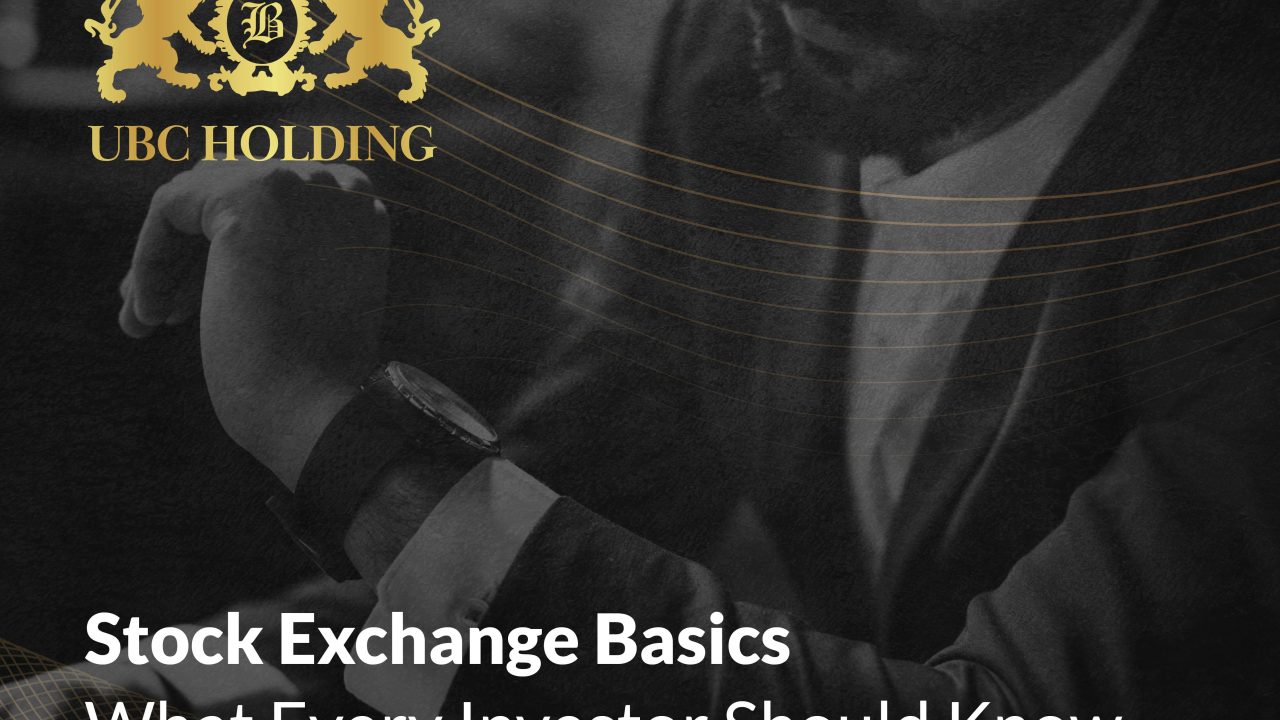The stock exchange basics market can seem like a daunting place for new investors, filled with complex terminology and rapid changes. But understanding the stock exchange basics is crucial for anyone looking to make informed investment decisions. This guide will walk you through the fundamentals, from the mechanics of stock exchanges to essential strategies for investing. By the end of this article, you’ll have a solid grasp of stock exchange basics, helping you navigate the financial markets with confidence.
What is a Stock Exchange?

Definition and Function
A stock exchange basics is a market place where securities, such as stocks and bonds, are bought and sold. It’s a centralized location where buyers and sellers come together to trade shares of publicly listed companies. Stock exchange basics provide a platform for raising capital, enabling companies to expand and investors to share in their growth.
- Primary Market: This is where companies issue new shares to the public through initial public offerings (IPOs). The primary market facilitates the raising of fresh capital.
- Secondary Market: After the initial sale, stocks are traded among investors in the secondary market. This is the arena where the majority of stock trading takes place.
Understanding these basic functions is essential for grasping the overall role of stock exchanges in the economy.
Major Global Stock Exchanges
Several major stock exchanges operate worldwide, each with unique characteristics and market influences:
- New York Stock Exchange (NYSE): The largest stock exchange by market capitalization, located in New York City.
- NASDAQ: Known for its technology-focused listings, also based in New York City.
- Tokyo Stock Exchange (TSE): The largest stock exchange in Japan and Asia.
- London Stock Exchange (LSE): One of the oldest stock exchanges, located in London.
- Shanghai Stock Exchange (SSE): A leading stock exchange in China.
These exchanges play a pivotal role in the global economy, influencing investment trends and financial markets worldwide.
Key Terms Every Investor Should Know

A stock exchange basics represents ownership in a company and constitutes a claim on part of the company’s assets and earnings. Stock exchange basics are also known as shares or equities.
- Common Stock: Provides voting rights and dividends, which are variable and not guaranteed.
- Preferred Stock: Generally does not provide voting rights but offers fixed dividends and priority over common stock in the event of liquidation.
Understanding the differences between common and preferred stock is fundamental to stock exchange basics.
Dividend
A dividend is a portion of a company’s earnings distributed to shareholders. Dividends can be issued as cash payments, shares of stock, or other property.
- Cash Dividend: The most common type, paid in currency.
- Stock Dividend: Paid in additional shares of the company’s stock.
- Property Dividend: Paid in the form of assets other than cash or stock.
Knowing how dividends work and their impact on investment returns is crucial for investors.
Bull and Bear Markets
These terms describe market conditions:
- Bull Market: A period of rising stock prices, often characterized by investor confidence and optimism.
- Bear Market: A period of falling stock prices, often marked by investor pessimism and fear.
Recognizing these market conditions helps investors make strategic decisions.
Market Capitalization

Market capitalization (market cap) is the total value of a company’s outstanding shares of stock. It’s calculated by multiplying the stock’s current price by the total number of outstanding shares.
- Large-Cap: Companies with a market cap of $10 billion or more.
- Mid-Cap: Companies with a market cap between $2 billion and $10 billion.
- Small-Cap: Companies with a market cap of less than $2 billion.
Understanding market capitalization helps investors assess the size and stability of companies.
IPO (Initial Public Offering)
An IPO is when a company offers its shares to the public for the first time. This process allows companies to raise capital from public investors.
- Prospectus: A legal document issued during an IPO that provides details about the company and the offering.
- Underwriter: A financial institution that helps manage the IPO process and sets the initial price for the shares.
Knowing what an IPO is and its significance is a key aspect of stock exchange basics.
How Stock Exchanges Work

The Trading Process
Trading on a stock exchange basics involves several steps:
- Order Placement: Investors place buy or sell orders through brokerage accounts.
- Matching Orders: The exchange matches buy and sell orders based on price and time priorities.
- Execution: Once matched, the orders are executed, and the trade is completed.
- Settlement: The transaction is finalized, typically within two business days (T+2).
Understanding this process helps investors navigate the mechanics of stock trading.
Types of Orders
Different types of orders allow investors to control the conditions under which trades are executed:
- Market Order: An order to buy or sell immediately at the best available price.
- Limit Order: An order to buy or sell at a specific price or better.
- Stop Order: An order to buy or sell once the stock reaches a specific price, turning into a market order.
- Stop-Limit Order: Similar to a stop order, but becomes a limit order instead of a market order when the stop price is reached.
Knowing these order types helps investors execute trades more effectively and strategically.
Trading Hours
Stock exchanges operate during specific hours, typically from Monday to Friday. For example:
- NYSE and NASDAQ: 9:30 AM to 4:00 PM Eastern Time.
- LSE: 8:00 AM to 4:30 PM GMT.
- TSE: 9:00 AM to 3:00 PM JST, with a lunch break from 11:30 AM to 12:30 PM.
Being aware of trading hours is important for timing your trades effectively.
Investment Strategies
Long-Term Investing
Long-term investing involves holding stock exchange basics for an extended period, often years or decades. This strategy aims to benefit from the long-term growth of companies and the overall market.
- Benefits: Potential for significant capital appreciation, dividends, and compounding returns.
- Approach: Focus on fundamentally strong companies with good growth prospects and stable financials.
Long-term investing is a cornerstone of stock exchange basics, promoting patience and strategic planning.
Short-Term Trading
Short-term trading involves buying and selling stocks over shorter periods, from days to months. This strategy seeks to capitalize on market volatility and price movements.
- Day Trading: Buying and selling stocks within the same trading day.
- Swing Trading: Holding stocks for several days to weeks to profit from short-term price movements.
Short-term trading requires a different skill set and risk tolerance compared to long-term investing.
Value Investing
Value investing involves selecting stocks that appear undervalued based on fundamental analysis. Investors look for companies trading below their intrinsic value.
- Key Metrics: Price-to-earnings (P/E) ratio, price-to-book (P/B) ratio, and dividend yield.
- Approach: Focus on companies with strong fundamentals, but whose stock prices are temporarily depressed.
Value investing is a popular strategy that aligns with stock exchange basics, emphasizing careful analysis and patience.
Growth Investing
Growth investing focuses on companies expected to grow at an above-average rate compared to other companies. These companies often reinvest earnings to expand their operations.
- Key Indicators: High revenue growth, expanding profit margins, and innovative products or services.
- Approach: Invest in companies with strong growth potential, even if they have higher valuations.
Growth investing emphasizes the potential for significant returns by investing in companies poised for rapid expansion.
Risks and Rewards
Stock prices can be volatile, influenced by economic data, geopolitical events, and market sentiment. Investors must be prepared for fluctuations in stock values.
- Managing Volatility: Diversification, long-term perspective, and staying informed about market trends.
Understanding market volatility is essential for managing the risks associated with stock exchange basics.
Economic Factors
Economic conditions, such as interest rates, inflation, and GDP growth, significantly impact stock prices. Investors should monitor economic indicators to gauge market conditions.
- Interest Rates: Higher rates can lead to lower stock prices as borrowing costs increase.
- Inflation: Rising inflation can erode purchasing power and impact corporate profits.
Keeping an eye on economic factors helps investors make informed decisions about their stock investments.
Company Performance
The financial health and performance of individual companies directly affect their stock prices. Key performance indicators include revenue growth, earnings, and profit margins.
- Earnings Reports: Quarterly earnings reports provide insights into a company’s financial health and future prospects.
- Management: Strong leadership and effective management are crucial for a company’s success.
Evaluating company performance is a fundamental part of stock exchange basics, enabling investors to make informed choices.
Regulatory Environment
The regulatory environment can impact stock exchange basics, including changes in tax policies, financial regulations, and trade policies. Investors should stay informed about regulatory developments.
- Tax Policies: Changes in tax rates and regulations can affect corporate profits and investor returns.
- Financial Regulations: Regulatory changes can impact market liquidity and investor protection.
Being aware of the regulatory environment helps investors navigate potential risks and opportunities in the stock market.
FAQs About Stock Exchange Basics
What is the difference between a stock exchange and a stock market?
A stock exchange is a specific marketplace where securities are traded, while the stock market refers to the broader system of trading stocks, including multiple exchanges.
How do I start investing in the stock market?
To start investing, open a brokerage account, research and select stocks, and develop an investment strategy. Consider consulting a financial advisor for personalized guidance.
What are the risks of investing in stocks?
Risks include market volatility, economic factors, company performance, and regulatory changes. Diversification and staying informed can help manage these risks.
How do dividends work?
Dividends are payments made by companies to shareholders, usually in cash or additional shares. They represent a portion of the company’s profits distributed to investors.
What is the role of stock exchanges in the economy?
Stock exchange basics facilitate capital raising for companies and provide a platform for investors to buy and sell securities. They play a crucial role in the allocation of capital and economic growth.
How can I minimize my investment risks?
Diversify your portfolio, stay informed about market trends and economic factors, and adopt a long-term investment perspective. Consider using stop-loss orders to limit potential losses.
What is market capitalization, and why is it important?
Market capitalization represents the total value of a company’s outstanding shares. It helps investors assess the size and stability of companies, guiding investment decisions.
Can I invest in foreign stock exchanges?
Yes, many brokers offer access to foreign stock exchanges. Investing internationally can diversify your portfolio and expose you to different economic conditions and opportunities.
How do I choose between long-term and short-term investing?
Consider your financial goals, risk tolerance, and time horizon. Long-term investing focuses on gradual wealth accumulation, while short-term trading seeks to capitalize on market volatility.
What is the significance of an IPO?
An IPO allows a company to raise capital from public investors, providing funds for expansion and growth. It also offers investors the opportunity to buy shares of the company for the first time.
Conclusion
Understanding stock exchange basics is essential for any investor looking to navigate the financial markets successfully. From the fundamental mechanics of stock exchange basics to key investment strategies and risk management, this comprehensive guide equips you with the knowledge needed to make informed decisions. By mastering these stock exchange basics, you’ll be well on your way to building a solid foundation for your investment journey. Remember, continuous learning and staying informed about market trends are crucial for long-term success in the stock market.


